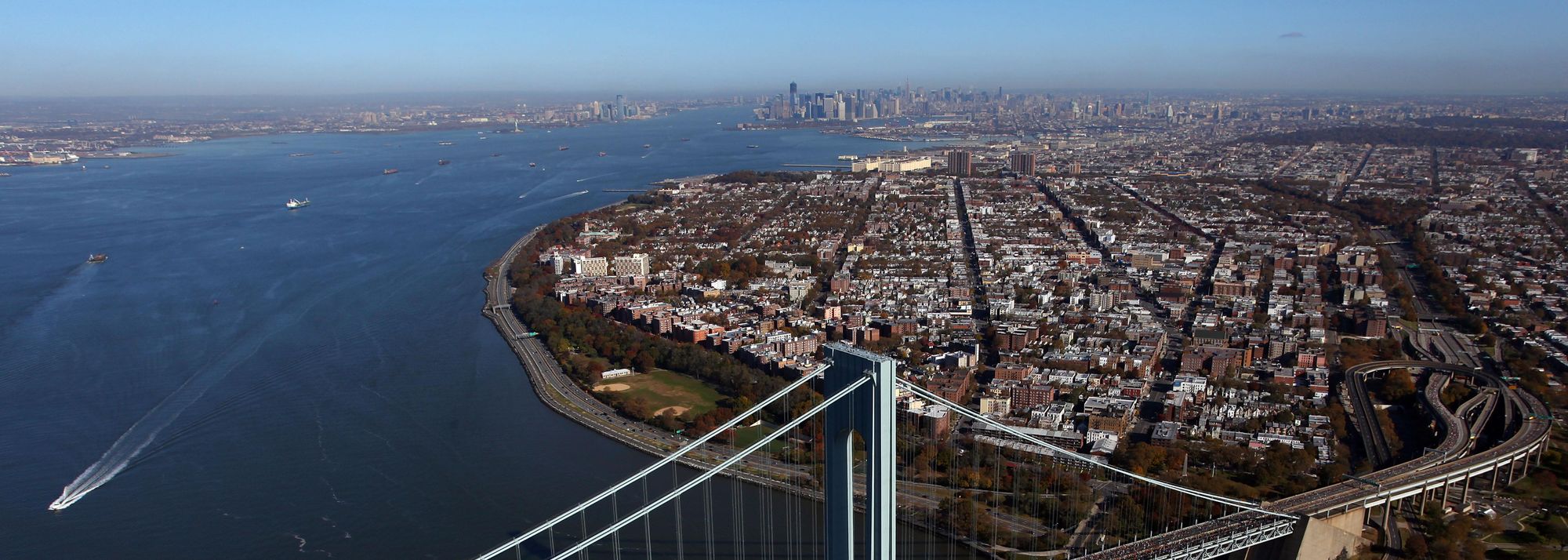Runners on the Verrazano-Narrows Bridge during the 2011 New York City Marathon (© Getty Images)
Given the current status of the New York City Marathon, it is a little hard to believe that the genesis of a race, which many regard as the world’s most iconic marathon, had such humble beginnings.
Yet 50 years ago today the inaugural New York City Marathon took place with little fanfare and limited media coverage – with a short article and no photos in the New York Times - on an unremarkable route within the confines of Central Park.
While the historic Boston Marathon – first run in 1897 – was long regarded as the world’s most prestigious city marathon – New York was keen to establish a 42.2km event of its own and Fred Lebow and Vince Chiappetta stepped in to organize the 1970 event.
Charging an entry fee of $1 that first race attracted just 127 entries, 126 men and one woman.
Organised in later summer, participants were greeted to temperatures close to 30C and high humidity as they set off by the current finish line next to Tavern on the Green.
Running a counter clockwise route, the participants of the inaugural race completed a small loop near the southern end of the part, followed by four laps of the undulating main drive of the park.
One person present on that historic day was current New York Road Runners Chair of the Board George Hirsch, who described his memories of the race to the New York Times.
“On that Sunday morning in 1970, I decided to run the Central Park loop in the opposite direction from the runners,” he recalls. “It was a fun way to log a long training run while cheering for my many friends in the race.
“I was among the few bona fide spectators that day. Most of the cyclists and pedestrians weaving in and out among the runners were just folks enjoying a car-free Sunday in Central Park. They didn’t seem to realise that a race was taking place.”
While the race had attracted little general media interest, the race attracted 50-year-old Ted Corbitt, a 1952 Olympic marathoner and the man known as “the father of long-distance running” in the US.
Corbitt, who had held US records from 25 miles to 100 miles, was still a formidable opponent and given his standing within the tight-knit New York city running community he was awarded the number one bib for the inaugural NYC Marathon.
Among his main opposition was firefighter Gary Muhrcke, who the night before race day had to face several call outs from the station house.
Following a night of little sleep on race morning he considered pulling out of the event.
However, his wife convinced her husband to give it a go and he made it in time for the 11am start.
Given the demanding race conditions both Corbitt and Muhrcke opted to start at a cautious pace as Philadelphia-based Moses Mayfield surged to the front and opened up a clear lead.
With two laps remaining, Muhrcke sat in about ninth place when the Millrose AA team-mate he was running alongside, Pat Bastick, quit.
All of a sudden as he was running solo he felt a need to run harder he push the pace.
On the penultimate lap he picked off six runners to move into the top three. Five miles out from the finish he swept by teenager Tom Fleming and then at 24 miles he caught and passed Mayfield, whose race was dramatically unravelling in the intense heat and humidity.
It was now Muhrcke’s race to lose and he went on to cross the finish line by the Tavern of the Green in 2:31:39 to become the inaugural winner of the New York City Marathon. Fleming placed second (2:35:44) with the 50-year-old Corbitt in fifth in 2:44.
The lone woman in the race, Nina Kuscsik, had run 3:12 only five months earlier at the Boston Marathon but failed to finish.
“She came down with the flu just before the New York City race, and had to drop out at 14 miles,” adds Hirsch of the woman who went on to triumph in the NYC Marathon in 1972 and 1973.
The next five editions were also held in Central Park and over that period the race steadily grew in popularity to attract more than 500 starters.
Yet a pivotal moment in the race history occurred in 1976 when it expanded to the race route we know today which straddle all five New York boroughs.
Eager to capitalise on the growing running boom, George Spitz proposed the idea. A pair of businessmen, Lew and Jack Rudin, put up $25,000 to stage the event and once the mayor gave his blessing, the race could proceed on the new course.
More than 2000 participants took to the start line with Bill Rodgers, one of the superstar marathoners of the 1970s, dominating to win the men’s race in a time of 2:10:09 – more than three minutes clear of 1972 Olympic marathon champion Frank Shorter.
Miki Gorman secured victory in the women’s race in 2:39:11.
Since then the race has gone from strength to strength and provided a kaleidoscope of thrilling memories. Among the highlights include Norwegian distance running great Grete Waitz’s record-breaking nine victories in the women’s race. New Zealander Rod Dixon edging a compelling battle with Englishman Geoff Smith in 1983 and Meb Keflezighi becoming the first American in 27 years to secure victory in the 2009 edition.
The New York City Marathon has also mushroomed in size. In 1979 it attracted more than 10,000 runners for the first time and in 1997 is smashed through the 30,000 barrier.
Last year the event witnessed a global record number of 53,627 finishers for a marathon.
The race survived the cancellation of the 2012 race because of Hurricane Sandy and it has every intention to bounce back bigger and better next year from the disappointment of the cancellation of this year’s 50th anniversary race due to the global pandemic.
“After 1976 no-one, absolutely no one, even questioned whether the city-wide marathon should be run again,” adds Hirsch.
“We all knew that we had an instant hit on our hands – one that would become an annual institution and the best day in the life of New York city.”
Steve Landells for World Athletics





